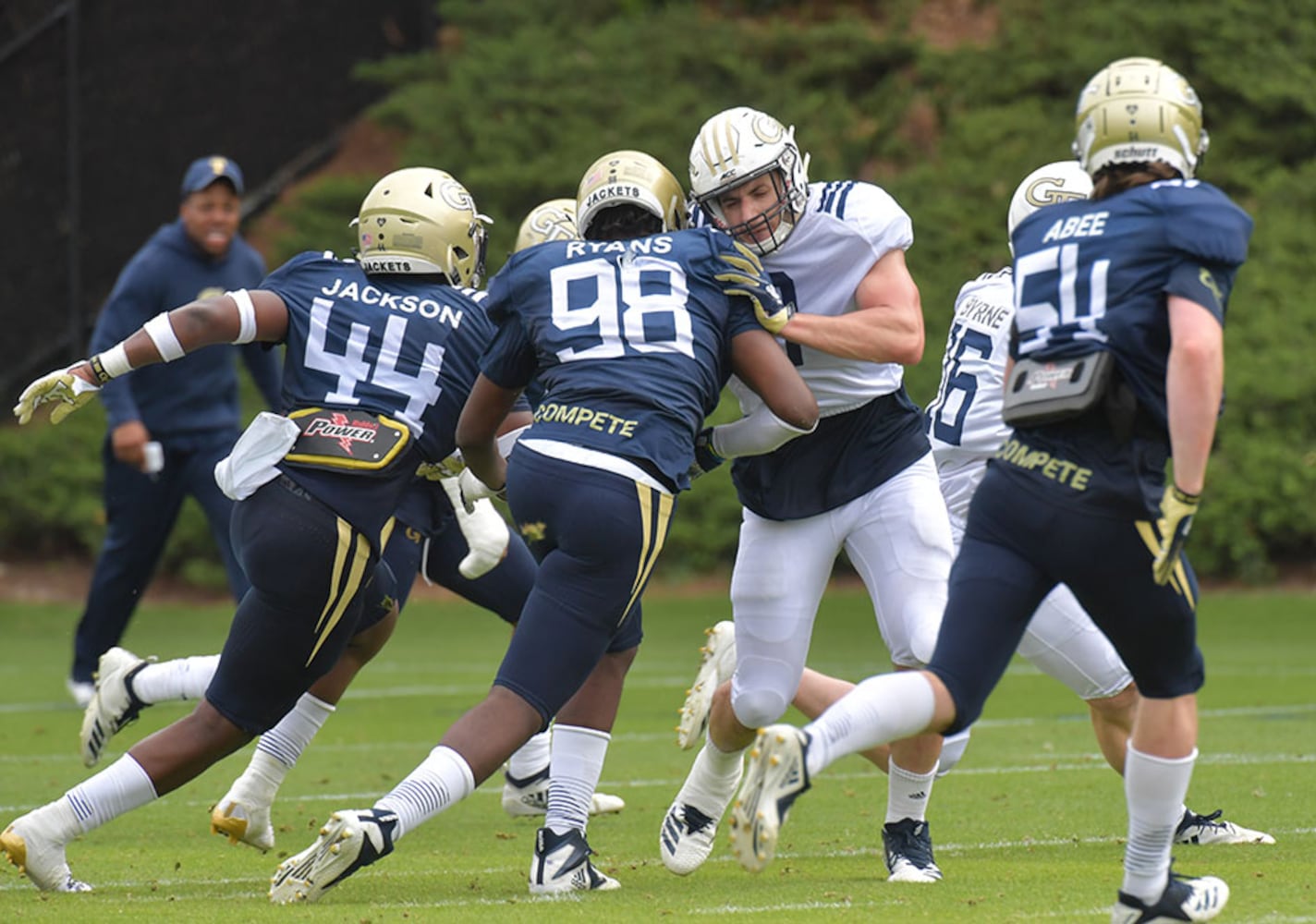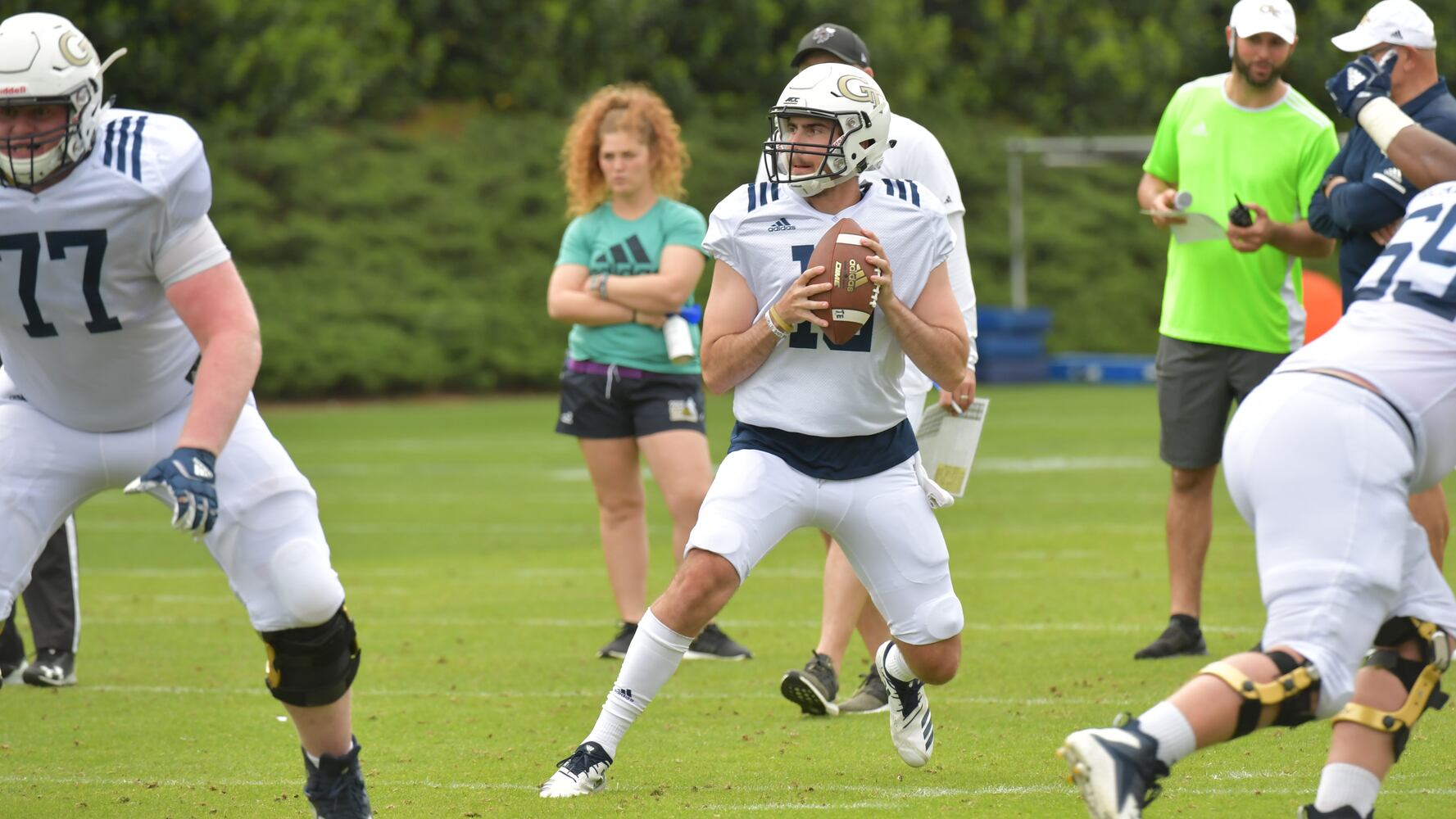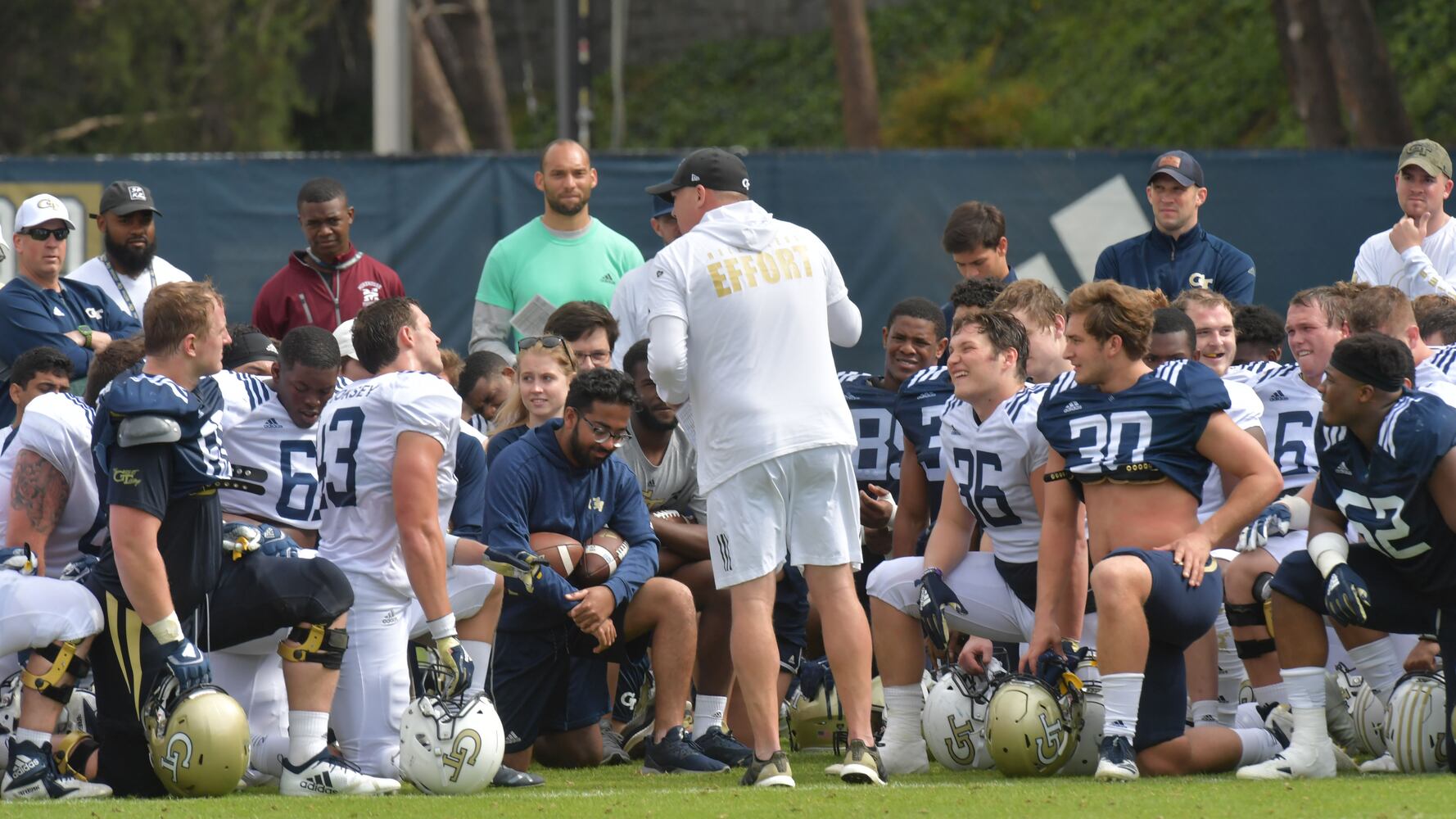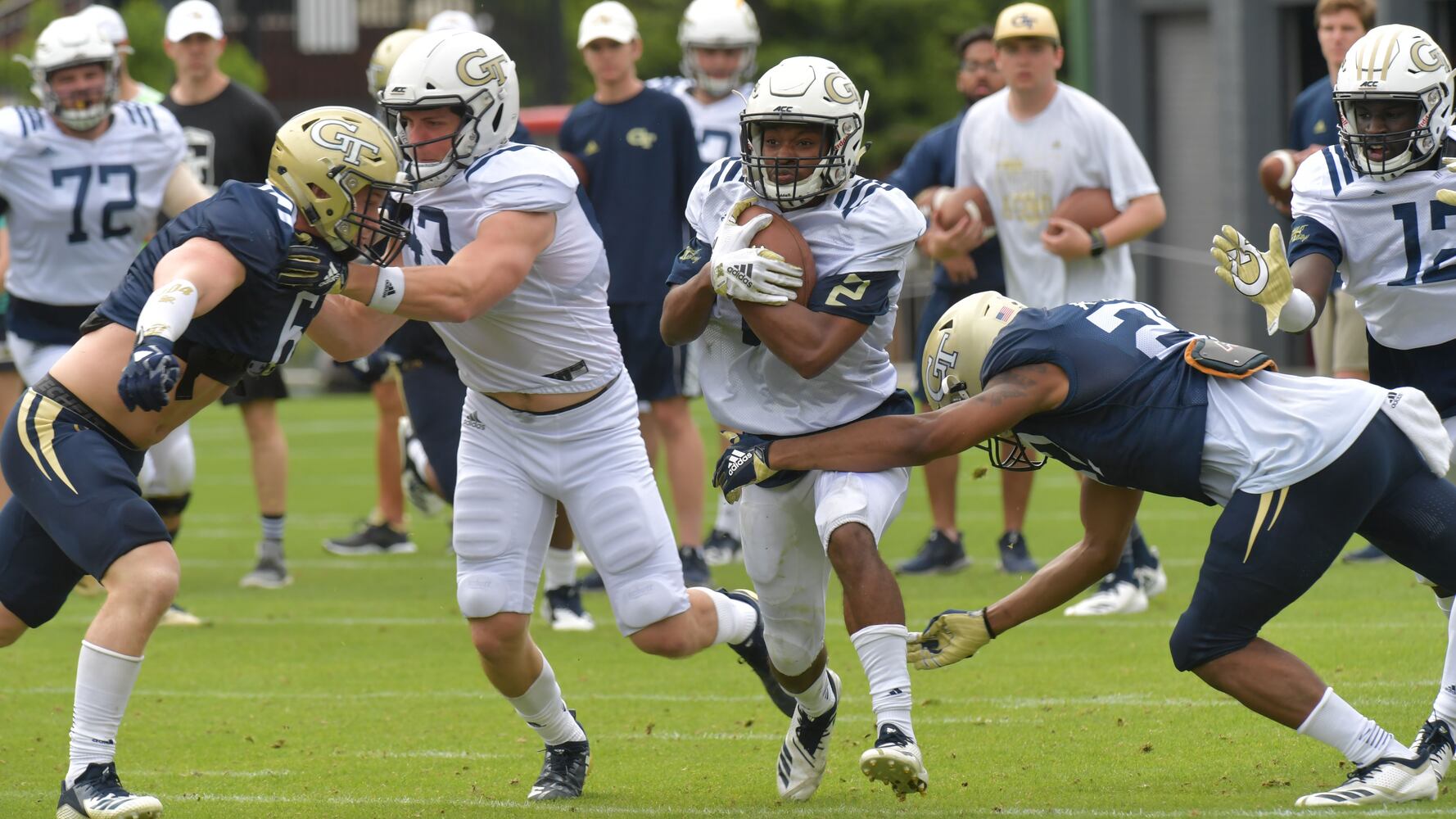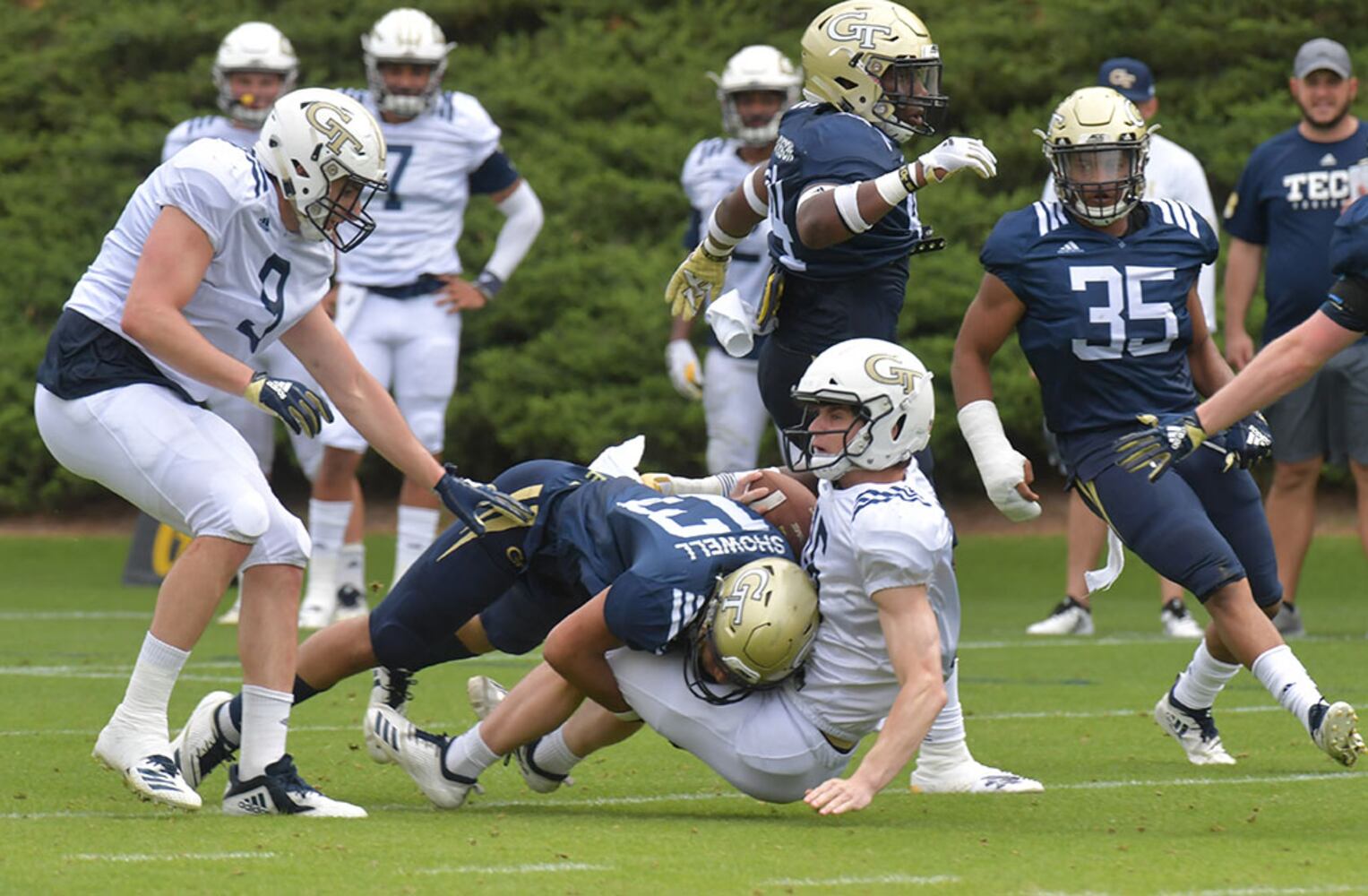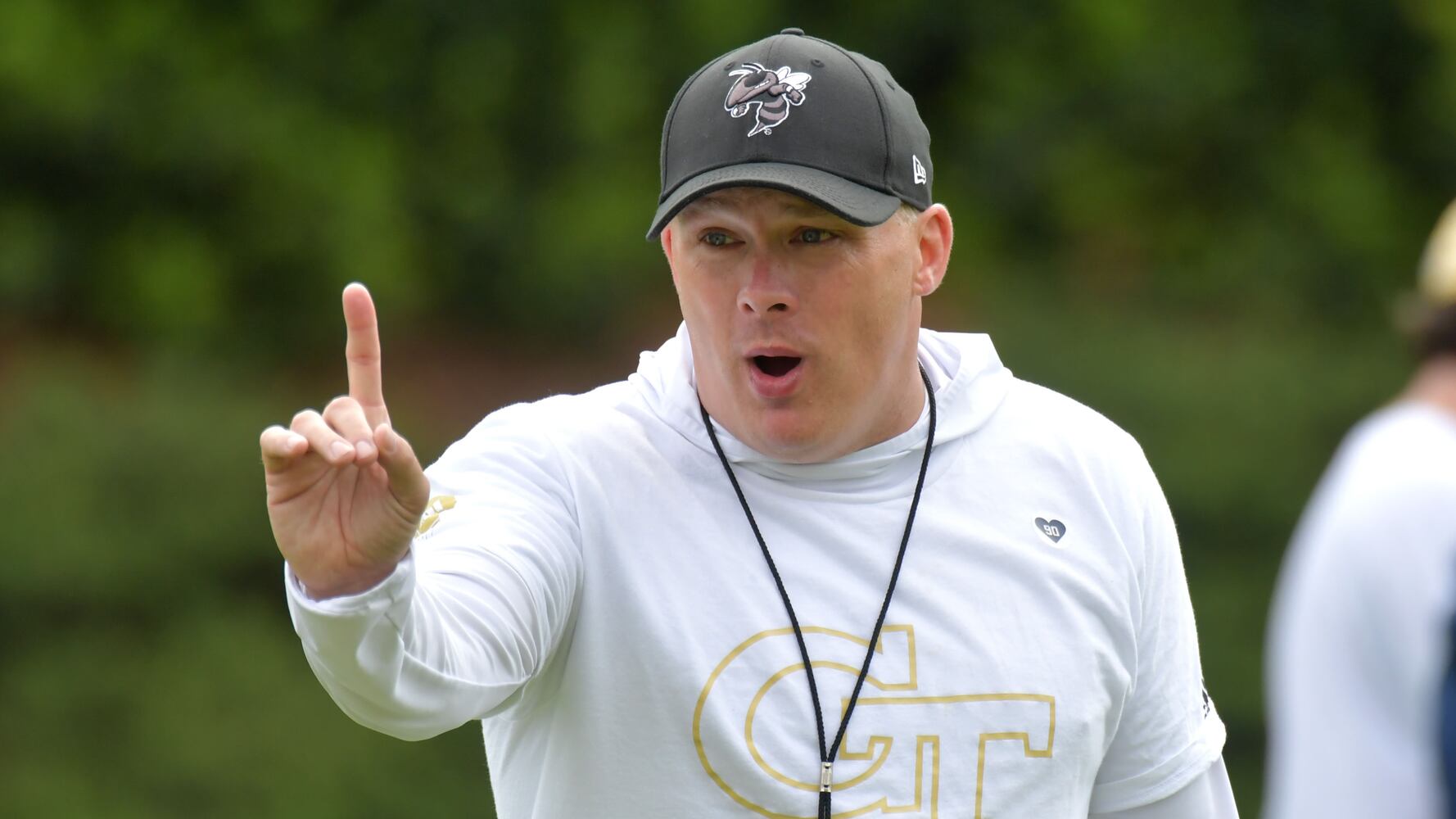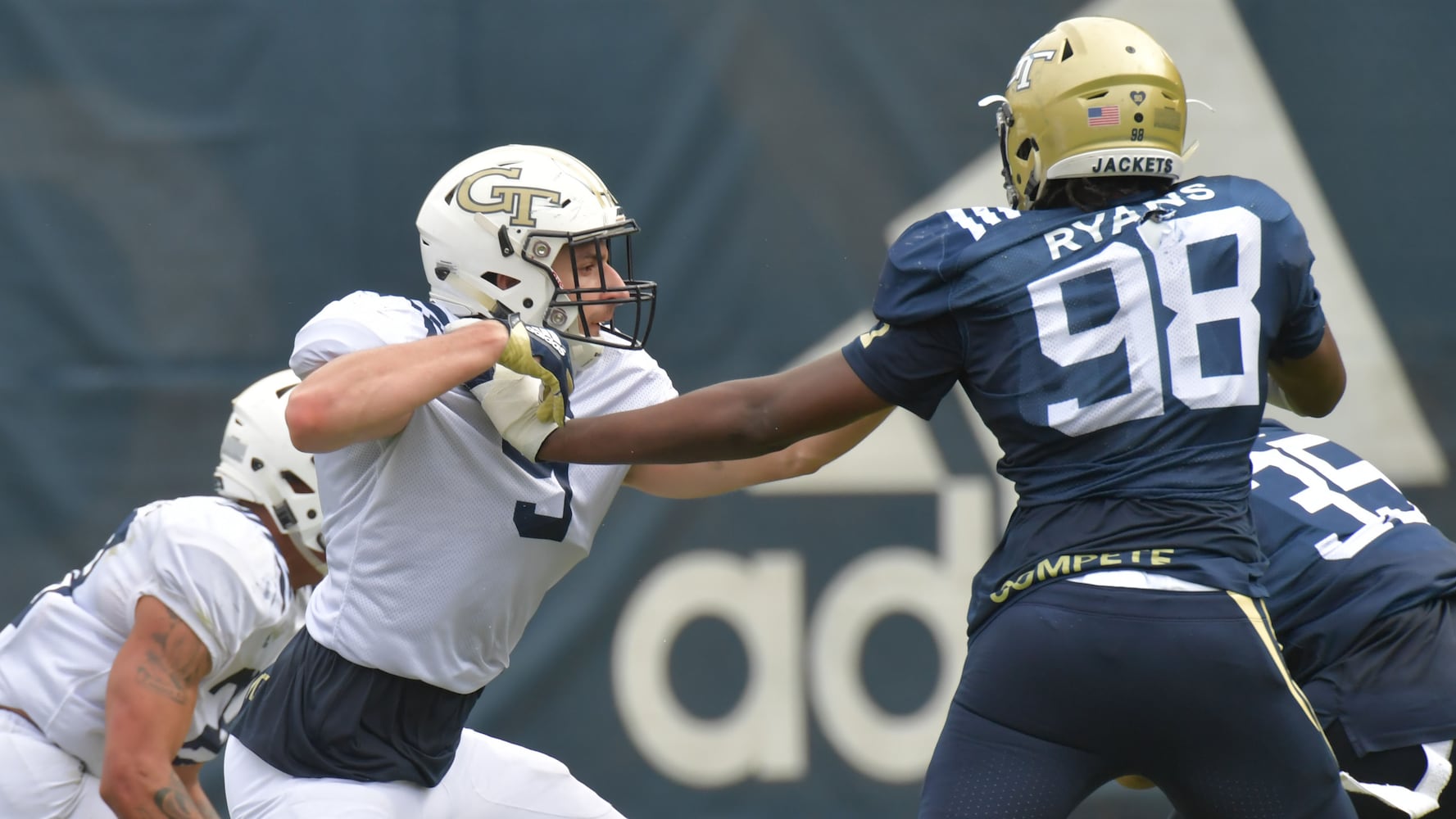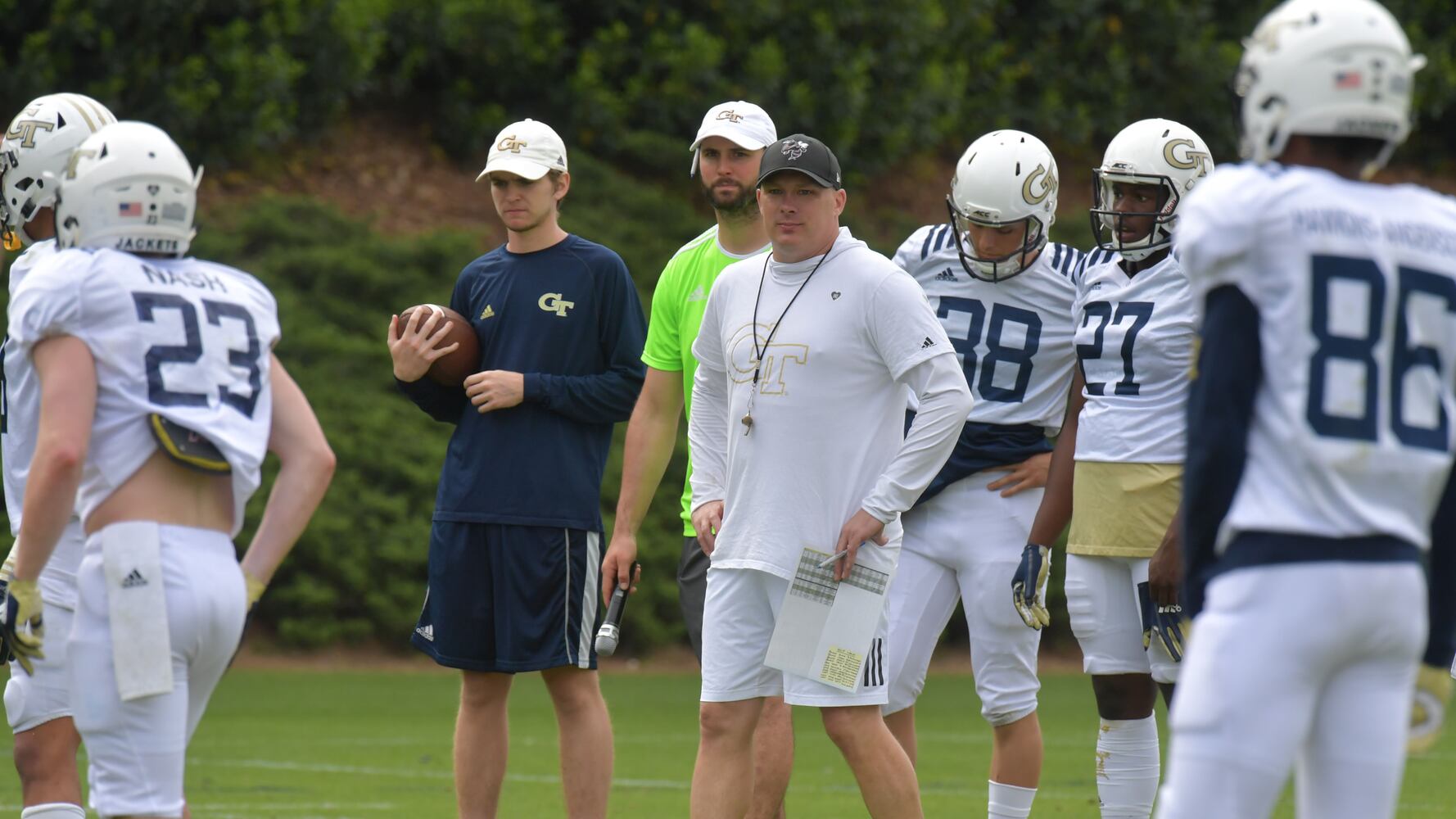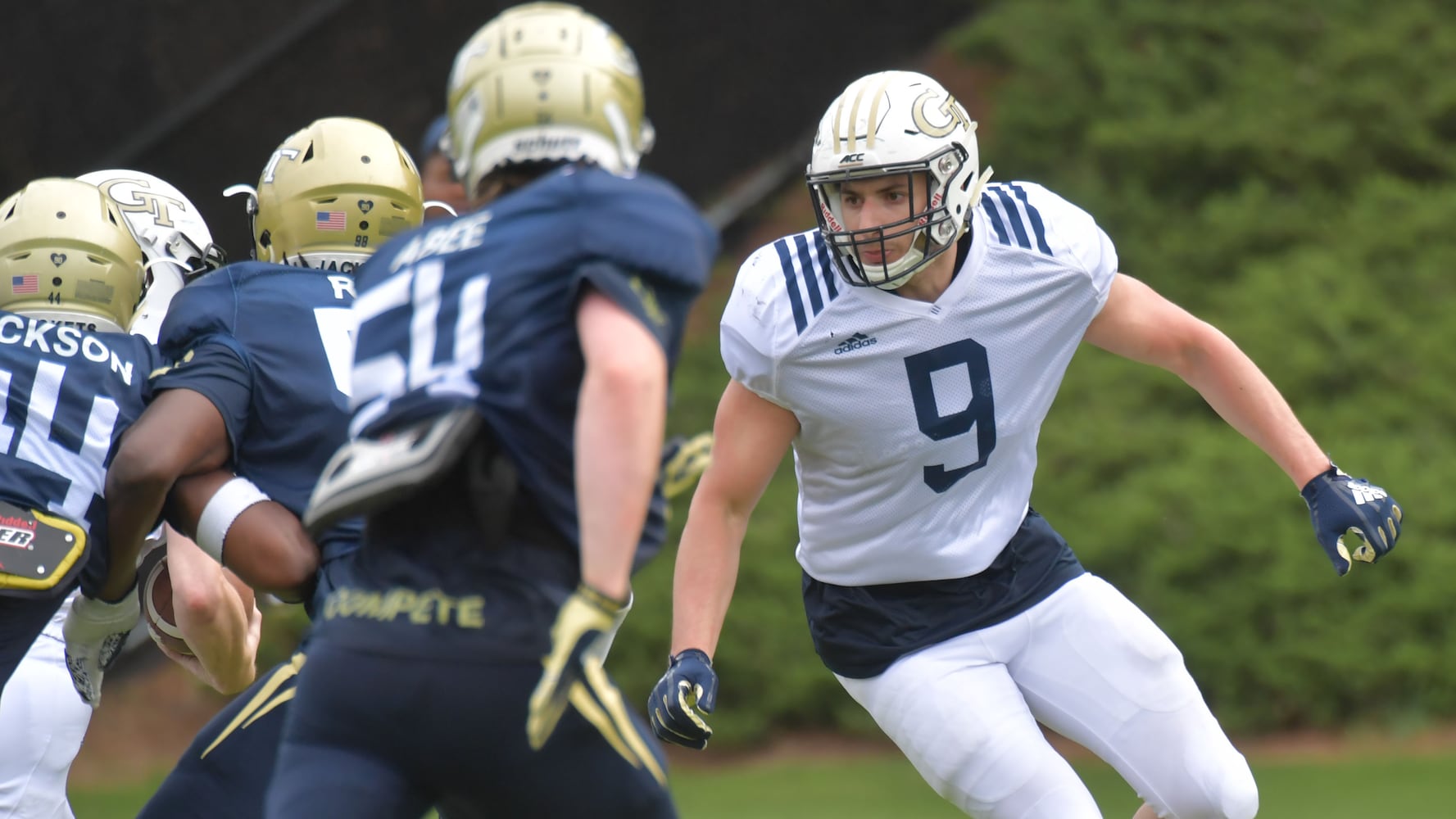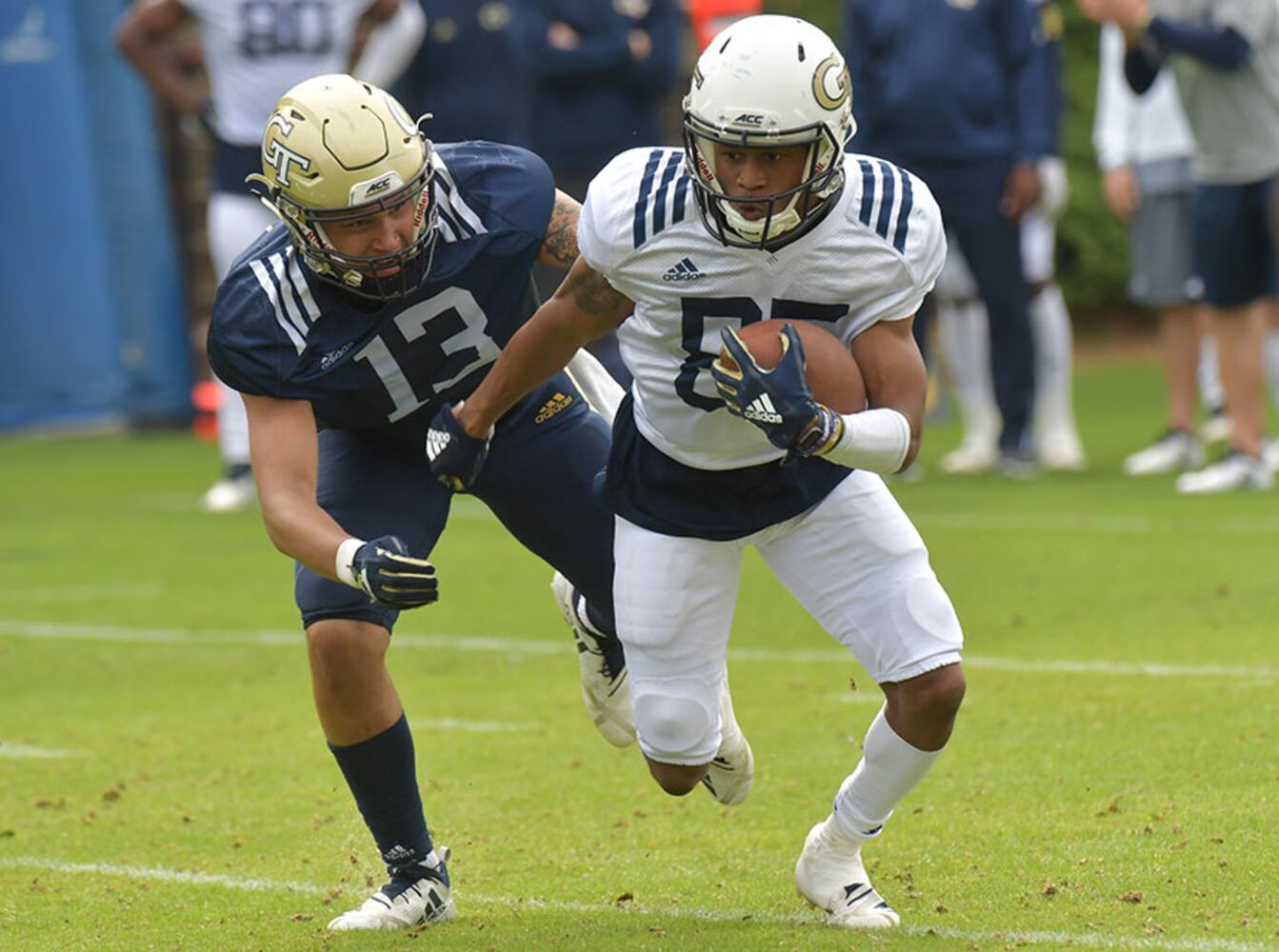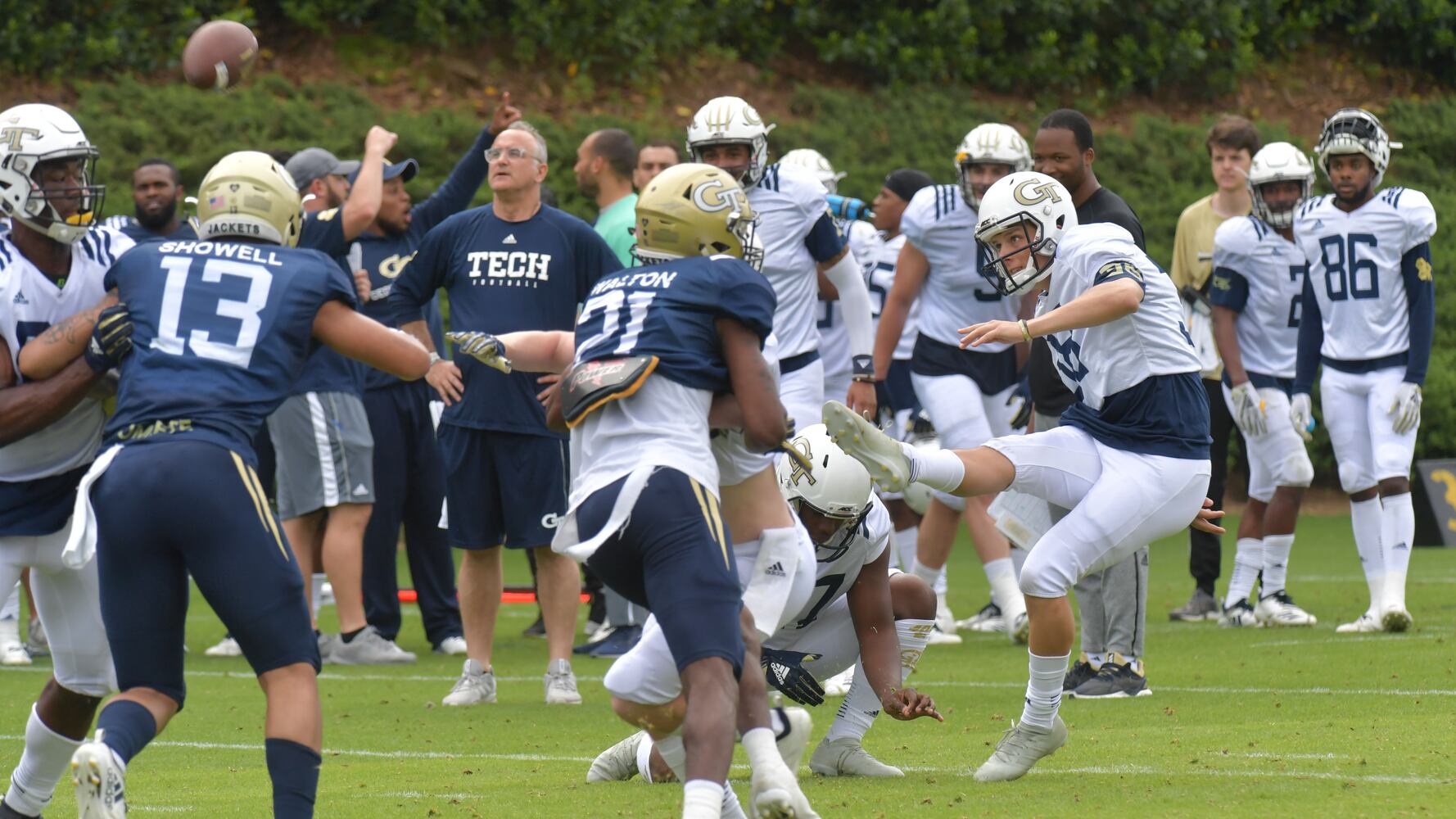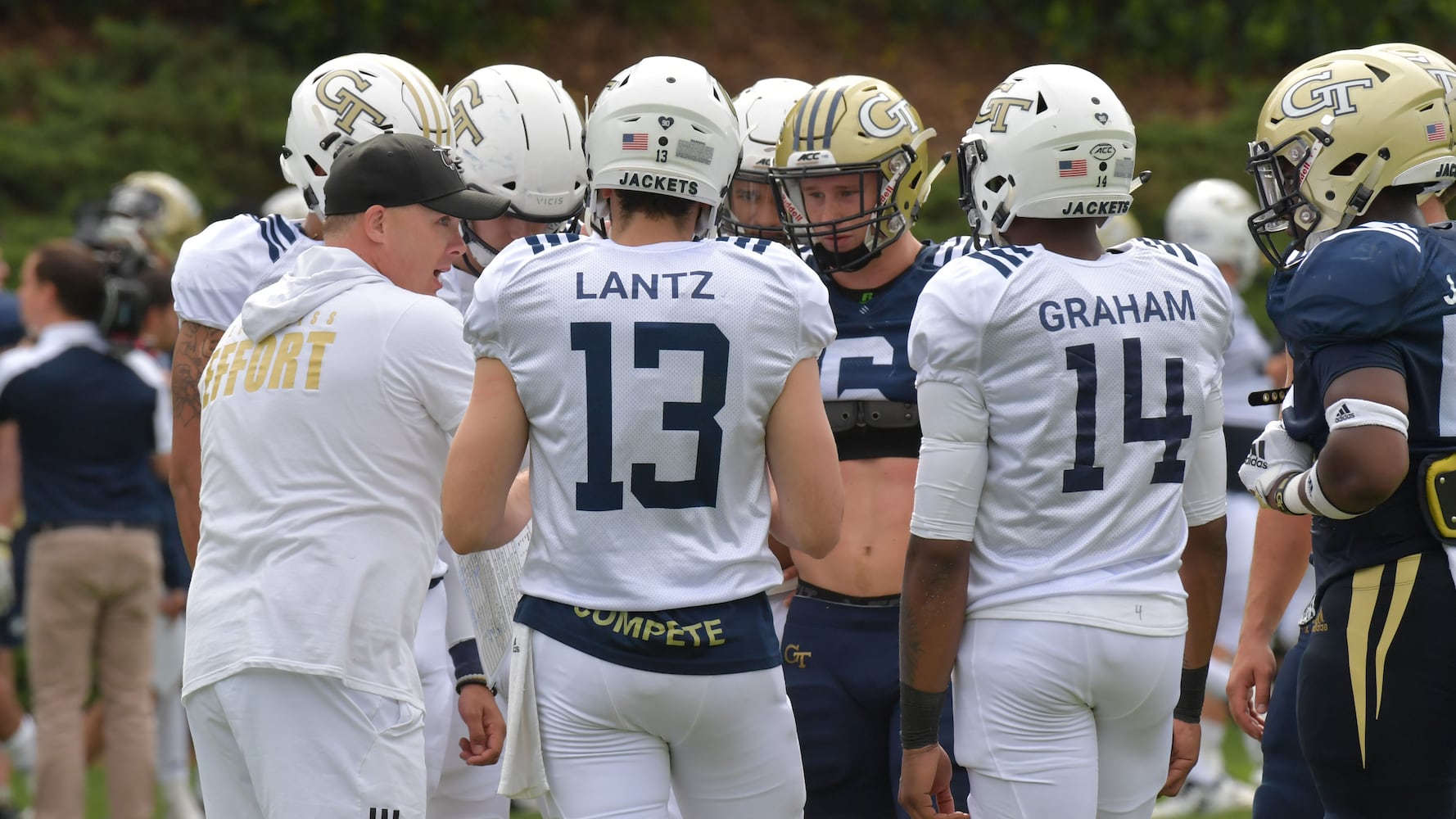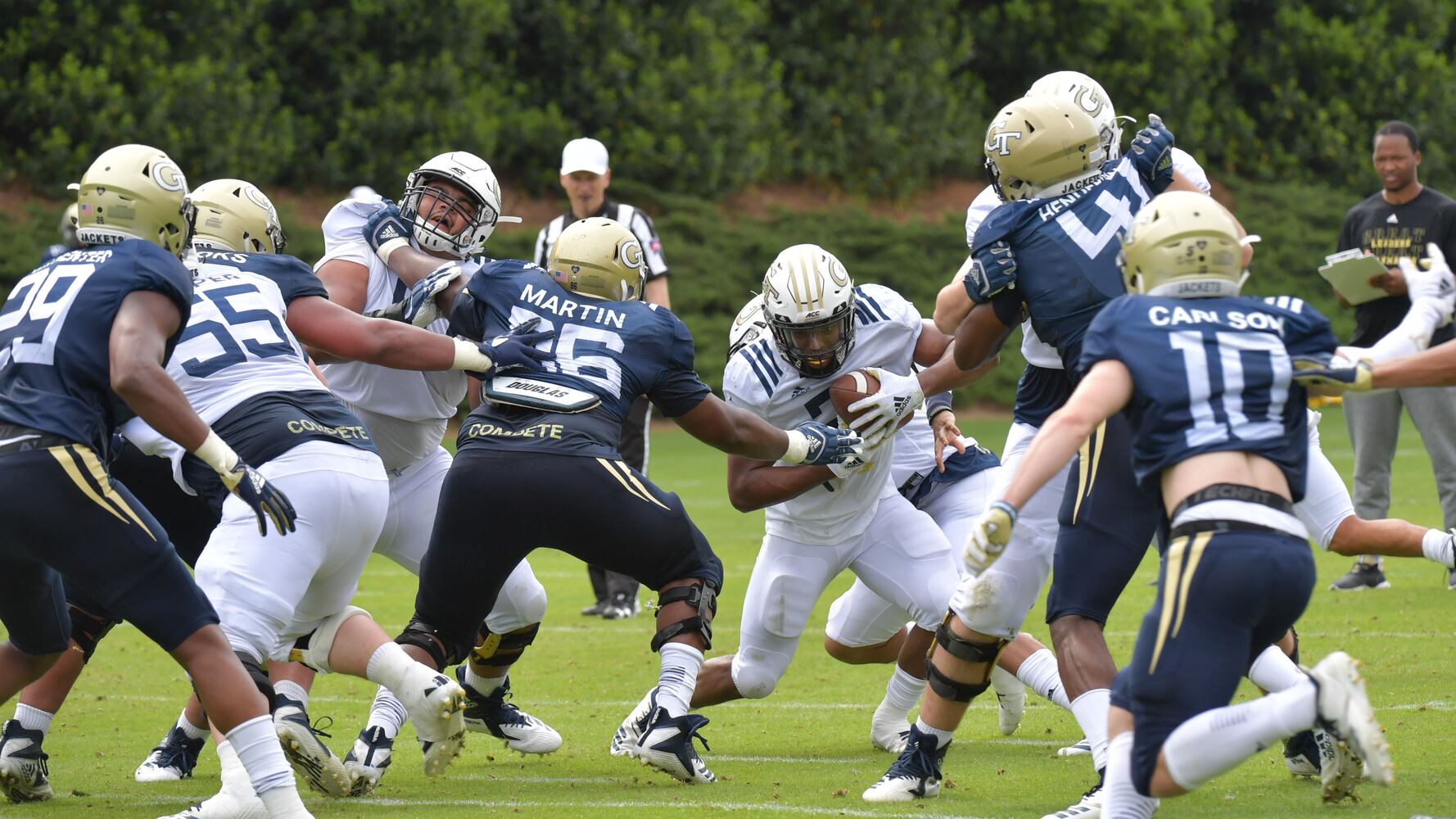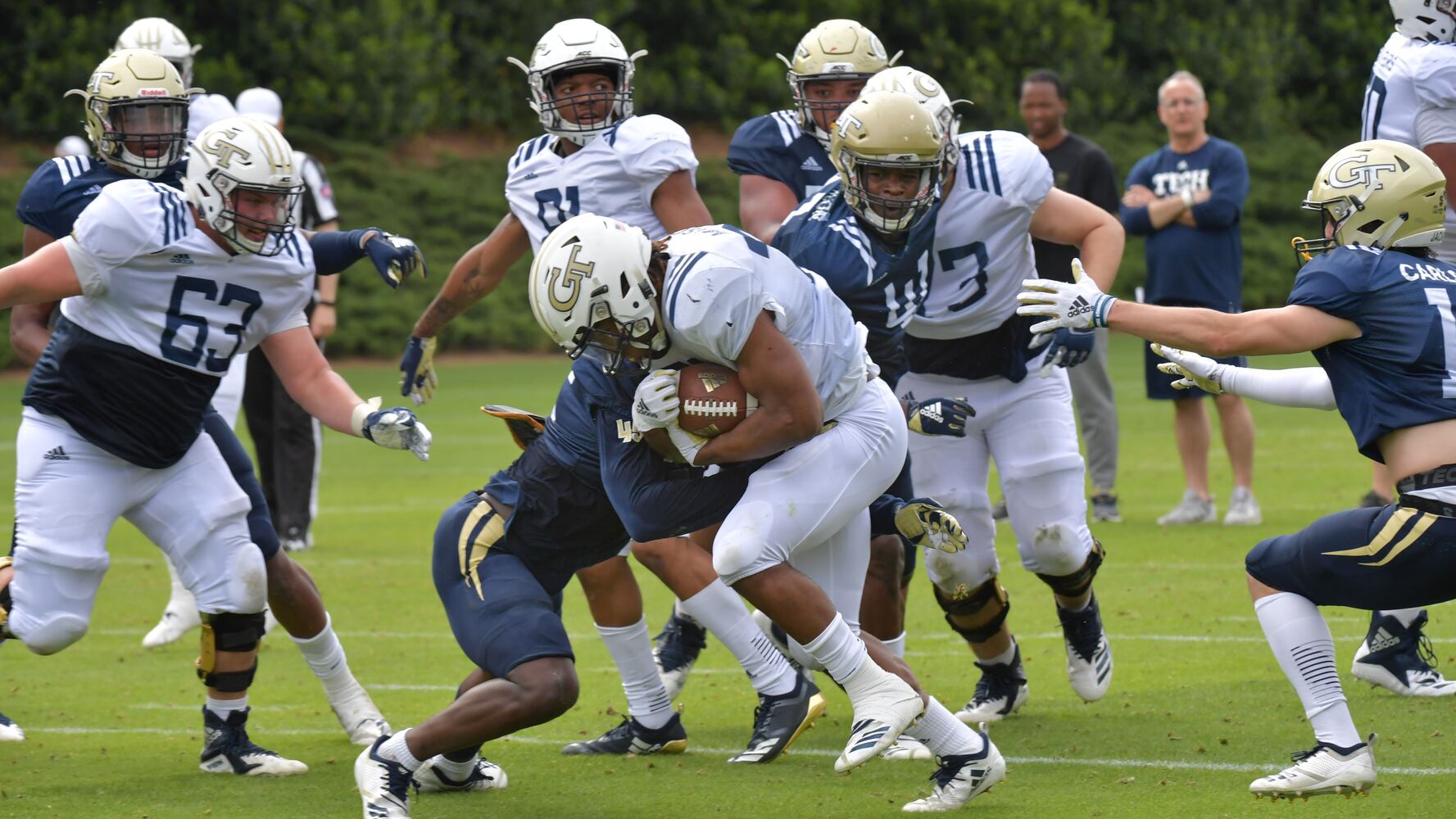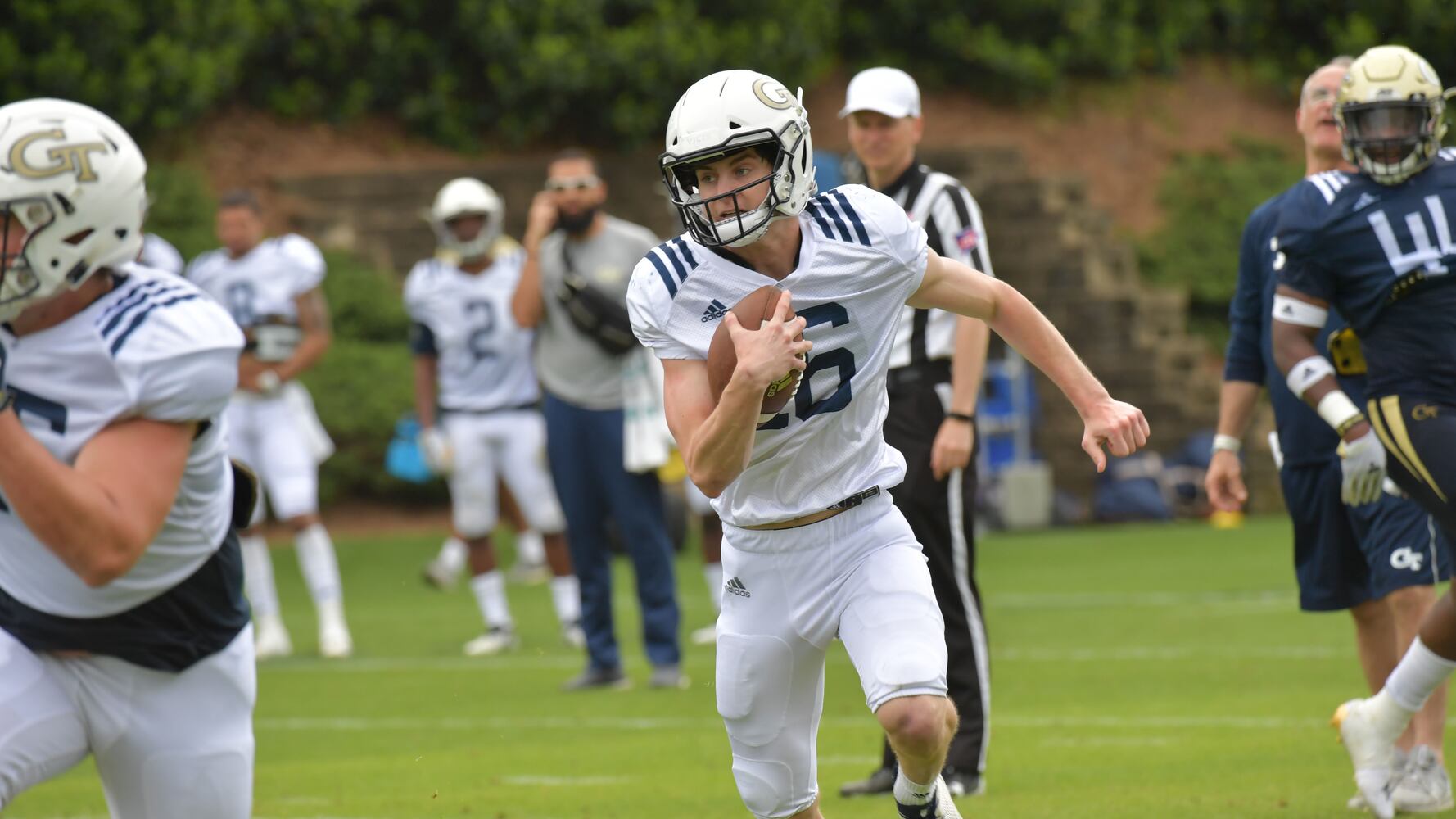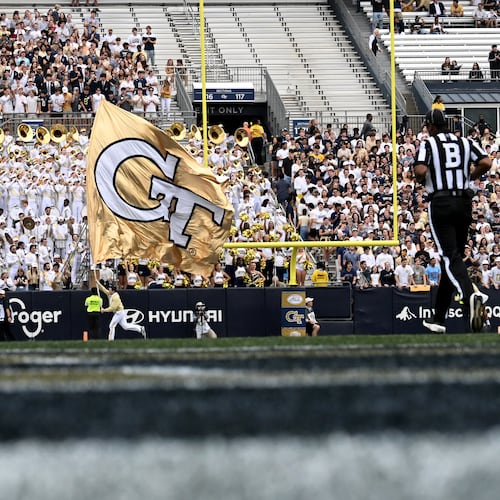One Georgia Tech tight end was previously a defensive lineman and linebacker who didn’t realize how precisely tight ends had to run their routes. Another had to be taught a pass-catching technique often taught in high school. A third was unaware of the central role that the position has in the offense.
In the transition from an offense that didn’t use tight ends to one that relies on the position, the learning process for that position group has had to start at the ground floor. Fortunately for Tech, a capable and willing teaching aide is available to tight-ends coach Chris Wiesehan to help bring along the novices. Tyler Davis, a grad transfer from Connecticut who enrolled in January, has brought to the Jackets more than good hands and capacity as a run blocker.
“Tyler’s a big help,” newbie tight end Josh Tukes said. “Even though he’s a new guy to Georgia Tech, he acts like he’s been here before, and he knows the position very well, and his experience is going to help us a lot this year.”
Davis, who has ideal size for the position at 6-foot-4 and 243 pounds, considered Louisville, Rutgers and a couple of other possibilities as he made his transfer decision. A big part of the reason he selected Tech was coach Geoff Collins.
“He’s relentless in everything that he does,” Davis said. “Recruiting, at practice, in the cafeteria. It’s just infectious energy that I feed off of and I like to see that every single day.”
Another aspect, though, was the opportunity he had to break ground as Tech’s first tight end since 2007, as former coach Paul Johnson’s offense did not use the position. Beyond an open path to playing time, it also represented the chance to add meaning to his final season of eligibility.
“It meant a lot to me to come here and start something up, start something special in the one year that I have, to leave a legacy as a tight end,” said Davis, from North Bellmore, N.Y.
Davis has eager teammates. Tukes and Joseph Macrina, formerly a defensive lineman/linebacker and B-back, respectively, are both walk-ons eager to get on the field. Tyler Cooksey is a senior, a former linebacker who has had to fight through injuries and whose contributions largely have been restricted to special teams. A fifth in the group is another walk-on, Nathan Tyler. Signee Dylan Deveney will enroll in June.
“Hopefully I’m doing everything that I can,” Davis said. “They’re a bright group of guys and I love ’em to death.”
Davis has been there to answer questions about basics like the pre-snap stance or footwork or to help conduct non-mandatory workouts or meetings. Having familiarity with the spread offense, Davis can also help the rest of the offense in understanding the scheme.
“He’s echoing the play and getting everybody aligned,” Wiesehan said. “He does a really strong job in that area.”
Said Cooksey, “He’s pretty much like another coach that we have out here.”
There is plenty to learn. Wiesehan compared the knowledge requirement with that of quarterbacks, as tight ends have to be able to know and read secondary coverages as a pass receiver and, as a blocker, be aware of blitzes and to know the run-blocking scheme and where to fit in. Tight ends also play a role in communicating before the snap with the line, the quarterback and the receivers.
“You have to know it all,” Wiesehan said.
Tight ends do a lot in Patenaude’s offense. They can line up on the outside as wide receivers, closer to the ball as slot receivers, at the end of the offensive line and in the backfield as an H-back. Patenaude’s scheme can use one or two tight ends on the field. It’s a lot for a group made up of players who largely had never played the position previously. Even Davis came to Connecticut as a high-school quarterback.
Davis, simply as an experienced player with a record of productivity (15 starts and 47 receptions), figures to be a major part of the offense in the coming season. His familiarity with the offense likely will make him even more valuable.
“I think in this offense, he’s going to be a guy that can obviously run block and then he can vertically stretch the field,” Wiesehan said. “When you have those two components as a tight end, you have a lot of worth. And how far we can get him to his goals, we’ll know by the 12th game. We’ll know after the 14th game, hopefully.”
As far as his legacy goes, that may not be known until seasons down the line.
“It’s kind of just taking baby steps and stacking bricks on bricks on bricks every single day, and they’ve done that,” he said. “I’m proud of the way they’ve come.”
About the Author
Keep Reading
The Latest
Featured
